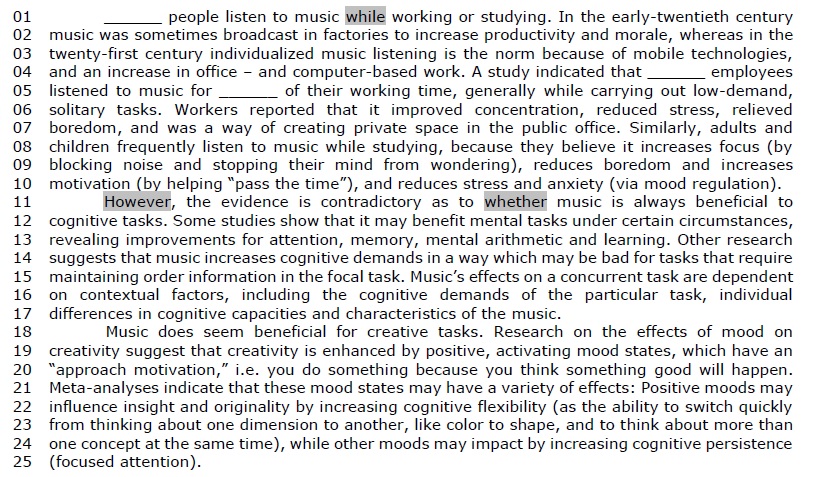Questões de Concurso
Comentadas sobre voz ativa e passiva | passive and active voice em inglês
Foram encontradas 139 questões
Based on text 1A1-I, judge the following item.
The sentence “‘green’ hydrogen ⎯ produced using renewable
energy sources to split water into its two component
elements ⎯ costs roughly US$ 5” could be correctly rewritten
as the use of renewable energy sources to separate water
into its two component elements produces ‘green’
hydrogen, which costs about US$ 5.
Read the sentences from the text given and tick the alternative with the passive voice structure.
I. This realization can be used to your advantage
as a teacher.
II. It exposes them to different ways of thinking.
III. They are being given appropriate materials and
practice for their own needs.
They should have locked the jewels in a safe.
Based on the previous text, judge the following item.
In the second paragraph, the sentence “Language teaching
was suspended by local education boards at one in five
primary schools in January 2021 due to Covid-19” is in the
passive voice and could be correctly rewritten as Due to
Covid-19, local education boards suspended language
teaching at one in five primary schools in January 2021.
Music Enabling Cognitive Work

(Avaliable in: ASHLEY, R. and TIMMERS, R. (Editors) The Routledge Companion to Music Cognition. New York:
Routledge, 2017 – text adapted specially for this test).
(l. 01-02): I. “Music was sometimes broadcast” is in the simple present, in a passive voice structure.
II. The adverb “sometimes” could be replaced by “rarely” with no changes in meaning.
III. The word “increase” could be translated as “aumentar”.
Which ones are correct?
1. The underlined words in the sentence “This long, pointed stick was first used as a weapon…” is an example of active voice in the past tense.
2. The words in bold “they” and “their”, in the text, are being used as a personal pronoun and a possessive adjective, respectively.
3. The negative form of the following sentence: “Do exercises for your arms, legs, back, and neck…” is “Don’t exercise your arms, legs, back, and neck…”.
4. The word ‘properly’ in “it’s important to warm up properly before practicing the javelin.” is an adverb that means correctly or satisfactorily.
Choose the alternative which contains the correct sentences.
Cybersecurity: An overview of cyber challenges facing the nation, and actions needed
Federal agencies and the nation’s critical infrastructure — such as energy, transportation systems, communications, and financial services — depend on Information Technology (IT) systems to carry out operations and process essential data. However, the risks to these IT systems are increasing—including insider threats from witting or unwitting employees, escalating and emerging threats from around the globe, and the emergence of new and more destructive attacks. Rapid developments in new technologies, such as artificial intelligence, the Internet of Things, and ubiquitous Internet and cellular connectivity, can also introduce security issues. Over 28,000 security incidents were reported by federal civilian agencies to the Department of Homeland Security in FY 2019.
Additionally, since many government IT systems contain vast amounts of personally identifiable information (PII), federal agencies must protect the confidentiality, integrity, and availability of this information—and effectively respond to data breaches and security incidents. Likewise, the trend in the private sector of collecting extensive and detailed information about individuals needs appropriate limits.
To highlight the importance of these issues, Government Accountability Office (GAO) has designated information security as a government-wide high-risk area since 1997. This high-risk area was expanded in 2003 to include the protection of critical cyber infrastructure and, in 2015, to include protecting the privacy of PII.
GAO has made about 3,300 recommendations to federal agencies to address cybersecurity shortcomings—and we reported that more than 750 of these had not been fully implemented as of December 2020. We designated 67 as priority, meaning that we believe they warrant priority attention from heads of key departments and agencies.
Adapted from: https://www.gao.gov/cybersecurity. Available on November 16th, 2022
“Teachers in Finland are seen as very important.” (fifth paragraph)
The corresponding sentence in the active voice is:
